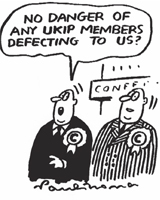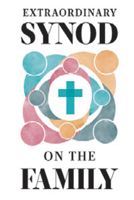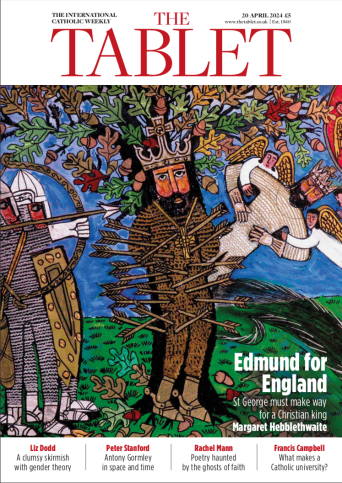As the Synod on the Family opens tomorrow, the fifth in our series looks at some of the 253 participants from around the world, and examines the gamble – perhaps a defining moment of his pontificate – Pope Francis has taken in encouraging open dialogue and debate
pope francis’ pontificate has two faces. Mercy is one. Acting tough in cleaning up the Roman Curia is the other. The Extraordinary Synod on the “Pastoral Challenges of the Family in the Context of Evangelisation” opens soon after the Vatican’s indictment of criminal proceedings for abusing minors against the former nuncio to the Dominican Republic, Jozef Wesolowski, and the firing of the Bishop of Ciudad del Este in Paraguay, Rogelio Livieres Plano, accused of protecting an abusive priest.
When the Synod begins to debate matters of doctrine and church discipline we will begin to see how this mix of mercy and ruthlessness plays out. Its opening tomorrow is the first leg of a long journey that will include a year of further consultation throughout the Church and then an ordinary general Synod on the Family in October 2015.
Since the first one was held in 1967, two years after the end of the Second Vatican Council, these general synods have mostly been non-events. Bishops often returned home complaining of having being frustrated by the lack of real dialogue and debate, especially during the pontificate of John Paul II. The 1999 European Synod of Bishops was shaken by Cardinal Carlo Maria Martini’s call for a small council or assembly to work with the Pope to unravel difficult “doctrinal and disciplinary knots”. His ideas were dismissed. Fifteen years later, collegiality is back on the agenda, with the small advisory group of cardinals (the “C9”) already established by Pope Francis and, it seems, a more open synod in prospect.
Although the sending out of questionnaires in October 2013 to the presidents of the national bishops’ conferences reflected Francis’ desire to engage the wider Church in the preparations for the synod, the document laying down the groundwork for it, the Instrumentum laboris published in June 2014 bears very little resemblance to the tone and style of his apostolic exhortation, Evangelii Gaudium, issued in November 2013.
The only original proposals for addressing the new pastoral challenges of marriage in advance of the synod have come from Cardinal Walter Kasper. The opposition to Kasper was already visible at the consistory of cardinals in February, most notably from Cardinal Gerhard Müller, the Prefect of the Congregation for the Doctrine of the Faith, and in the past few weeks several cardinals have published books, articles and interviews arguing against Kasper’s proposals for a relaxation of the ban on admission to Communion for divorced and remarried Catholics. The very fact that there has been so much activity suggests that some, at least, are anticipating a dramatic struggle.
OF COURSE, the alignments of members for and against the positions of Cardinals Müller and Kasper could change in light of the debates, and could be disrupted altogether if the synod is drawn instead to concentrate on issues more of a priority for bishops from the developing world.
Camillo Ruini, the president of the Italian episcopate for two decades and the most effective “cultural warrior” in post-Christian Democrat Italy, and Cardinals Collins of Toronto and O’Malley of Boston (a member of C9) will not be at the synod. But the most striking absentees from a synod on the family are what might be called “normal Catholics”. All the laity who have been invited belong to one of the “movements”: a couple from the Natural Family Planning Advisory Board of the United States bishops’ conference, a couple from the Focolare movement in Africa, and another from Couples for Christ, based in the Philippines.
SINCE HIS ELECTION in March 2013, all the most significant changes we have seen in the Church have come from Pope Francis. At the synod he will probably still be the decisive player. In a letter sent by the Pope to the synod’s secretary general, Cardinal Lorenzo Baldisseri in April, Francis talked about the synod in terms of a collegiality that is not only “affective” but “effective”. In recent weeks there have been further indications of how he sees the task of the synod.
Francis seems to have chosen participants in a deliberately bipartisan way: some of those he has appointed are clearly opposed to his pastoral vision of marriage. This says a lot about his desire for different voices to be heard, and his determination that there will be the genuine dialogue and debate that are essential if “synodality” is to be realised in the Church. This in itself is already a challenge to the status quo: previous synods had begun with a script already in place, and everybody knew it. This synod is different. There is no script.
Famously, John Paul II would not trouble to disguise the fact that he was reading his breviary when he attended sessions of the synod. Since he had already made up his mind what its conclusions were going to be, there was no need for him to pay much attention to the debates. Benedict XVI conceded one hour of “free discussion” during the synods that took place on his watch, but under both him and John Paul II, synods were largely ceremonial affairs.
We will see whether or not this synod marks a change in the way the Church is led and governed, not only from Francis’ words and actions but from his body language. If the past 18 months have shown us anything about Francis, it is that the dynamics of the relationship between the Pope and the bishops in the synod hall will be very different from those of his predecessors.
Massimo Faggioli is assistant professor of theology at the University of St Thomas in St Paul, Minnesota. His latest book, Pope Francis: Tradition in Transition, is published next year.
WHO’S WHO AT THE SYNOD
The members of the synod might be divided up along cultural-theological lines.
On the one hand, close to Francis’ image of the Church as a “field hospital” and at home with the language of mercy in dealing with difficult marriage and family issues might be included, along with Walter Kasper, cardinals Oswald Gracias, Óscar Rodríguez Maradiaga, Reinhard Marx, João Braz de Aviz, Pietro Parolin, Godfried Danneels, and – one of the pope’s appointees – the editor of Civiltà Cattolica, Antonio Spadaro SJ.
Some would put Cardinal Vincent Nichols of Westminster in this group, though, while calling for a “culture of mercy” in the Church, Nichols has also pointed to the difficulty of allowing Communion for the divorced and remarried without a “radical rethink” of either the Church’s teaching on the indissolubility of marriage or its teaching on the Eucharist. And cardinals are not known for their radical rethinking.
On the other side, there is the group that might be said to represent the legacy of John Paul II: cardinals Gerhard Müller (author of a book-length interview entitled The Hope of the Family), Raymond Burke, Carlo Caffarra, Angelo Scola, Marc Ouellet, George Pell (who have all recently issued articles in support of Müller’s view that there is no possibility of a relaxation of the ban on allowing the divorced and remarried to receive Communion) and Mauro Piacenza, Archbishop Rino Fisichella (the first president of the Pontifical Council for New Evangelisation, once a coming star, but eclipsed by the Francis pontificate and virtually absent from the Roman scene since Benedict XVI’s resignation) and Elio Sgreccia (another Francis appointee, but a bioethicist much favoured by John Paul II).
Also leaning towards the doctrinal and pastoral policies of the Benedict era are the American cardinals Timothy Dolan and Donald Wuerl, and the cardinal president of the Italian bishops’ conference, Angelo Bagnasco.
The position of some heavyweight cardinals – Christoph Schönborn, Gianfranco Ravasi (usually in favour of dialogue), Peter Turkson – and archbishops Vincenzo Paglia (president of the Pontifical Council for the Family, very close to the Community of St. Egidio) and Ricardo Blázquez (president of the Spanish bishops’ conference) remains as yet unclear.
There are two different orientations within those who call for a more merciful Church, typified by Schönborn and Paglia respectively: those who want some real change in the praxis and the ones who are in favour of a more pastoral sensitivity but no codified change.
WHAT IS AN EXTRAORDINARY SYNOD?
Participants are not elected by their peers as at ordinary synods; presidents of national bishops’ conferences plus heads of departments in the Roman Curia attend.
The Pope appoints some members (up to 15 per cent of the total). Others are invited to participate without the right to vote: experts (as helpers of the special secretary), auditors (present at the synod sessions), and “fraternal delegates” from other Churches and ecclesial communities.
This is only the third “extraordinary” synod, after the 1969 synod on episcopal conferences and the 1985 synod on the twentieth anniversary of the conclusion of the Second Vatican Council.
ORDER OF BUSINESS: The working sessions are divided into three phases. 1. Members make presentations of the situation in their particular Church. 2. On Monday 13 October, the “relator” formulates a series of points for discussion in small language groups, the so-called circuli minores. The group reports are read in a plenary session. 3. The small groups formulate observations in more precise form; in the final days of the synod votes are taken on concrete propositions; on Saturday 18 October the “Message of the Synod” is presented





 Loading ...
Loading ...
What do you think?
You can post as a subscriber user...
User Comments (0)